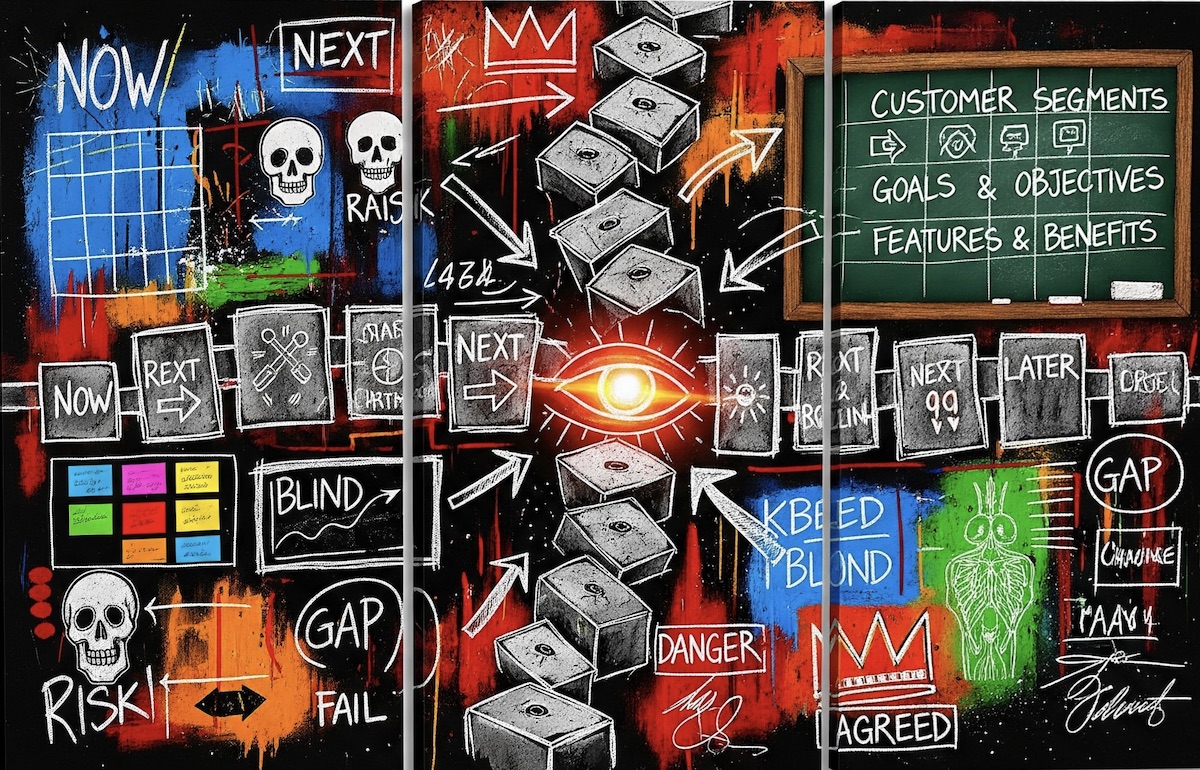
How to Build a Customer-Centric Roadmap in Four Steps
Welcome to the final part of my three part series on how to reclaim your product roadmap. In the first part, I identified how a tactical mindset erodes the ability of a business to use their roadmap to realize their strategic goals. In the second part, I explained why organizations need to push aside the tactical mindset during strategic planning. In this final installment, I will share a low-tech, collaborative approach to building your roadmap.
The Scrum Academy Solution
To create a customer-centric roadmap that connects business strategy with execution, I recommend that senior leaders sponsor a quarterly strategic planning workshop. During this one-day workshop, I recommend that you select a cross-functional team of participants from multiple departments to ensure multiple points-of-view converge to develop a realistic roadmap that balances stakeholder needs with business goals.
Unlike tool vendors, I recognize that many of the issues associated with roadmaps are related to communication, not tooling. Therefore, our workshop relies on analogue tools – markers and stickies posted on a wall – so that you and your peers have time to think, discuss and listen to one another. And since all the key decision-makers will be invited to participate in the creation of the roadmap, their commitment and alignment to the roadmap will be strong.
Below is an outline of how I go about creating a collaborative roadmap that realigns strategy and tactics to ensure consistency, focus and direction.
Four Steps to Creating a Collaborative Roadmap
Step #1: Create the Roadmap Skeleton
- Tape a sheet of rolled paper, roughly 1.5m x 5m minimum, to the wall. If rolled paper taped to a wall is not an option for you, feel free to use digital equivalents.
- Add six rows to the rolled paper taped to the wall: Customer Segments, Goals & Objectives, Features & Benefits, Market Rhythms & Events, Schedule Milestones and Technical Architecture.
- Add three time-based columns to the skeleton. When first starting this process, many organizations find using flexible time periods, like Now, Next and Later or Current Quarter, Next Quarter, Next Year, more helpful than specific dates, e.g. Q3 2026.
- Feel free to add additional rows, no more than three, to the skeleton to capture information unique to your business, e.g., compliance, security, partnerships, etc.
Step #2: Populate the Roadmap
- Distribute color-coded stickies to the different functional roles within the group, e.g. product blue, marketing orange, sales green, development yellow, etc.
- Invite people to add items to the roadmap skeleton. Participants may work as individuals or small groups. The groups may be functional or cross-functional.
- For any initiatives that need to be completed within the next three months, write them on a color-coded sticky and place them under the “Now” column. Provide the participants thirty to forty-five minutes to add stickies to the first column.
- Offer the participants about thirty minutes to discuss and adjust stickies based on interdependencies and strategic priorities.
- Next, place any priorities, events, initiatives, deadlines or targets that are intended to be completed within the next three to four months in the “Next” column. Place everything else into the “Later” column. Provide the participants thirty to forty-five minutes to add stickies to the remaining columns.
- Offer the participants about thirty minutes to discuss and adjust stickies based on interdependencies and strategic priorities.
 Figure 1: Using low-tech tools, markers and stickies taped to the wall, allows people time to think, discuss and listen so they build better roadmaps.
Figure 1: Using low-tech tools, markers and stickies taped to the wall, allows people time to think, discuss and listen so they build better roadmaps.Step #3: Identify Gaps and Risks
- Give the participants one to two minutes to silently review the roadmap. During this review, ask them to write down any questions or concerns they might have.
- Provide twenty to thirty minutes to discuss the issues they identified and make further adjustments.
- Facilitate a thirty to forty-five minute discussion about these topics:
- How realistic is this roadmap?
- What risks could hinder success? How could they be mitigated?
- If something unexpected, or unusual, were to happen, what could be deferred?
Step #4: Document and Preserve the Roadmap
- Capture any remaining action items and identify who owns them.
- Ask everyone to sign the roadmap. Take a group photo in front of the roadmap.
- Within forty-eight hours, convert the roadmap into a digital format for sharing and communication.
- Retain the physical roadmap for comparison at the next roadmapping session.





